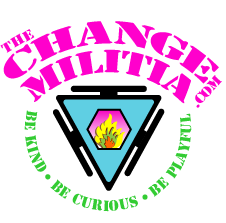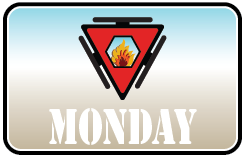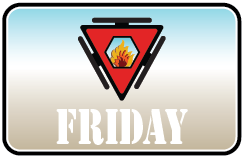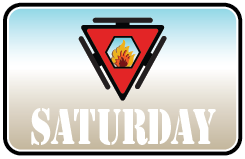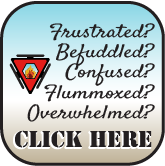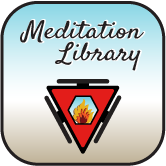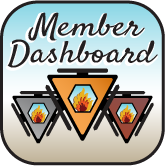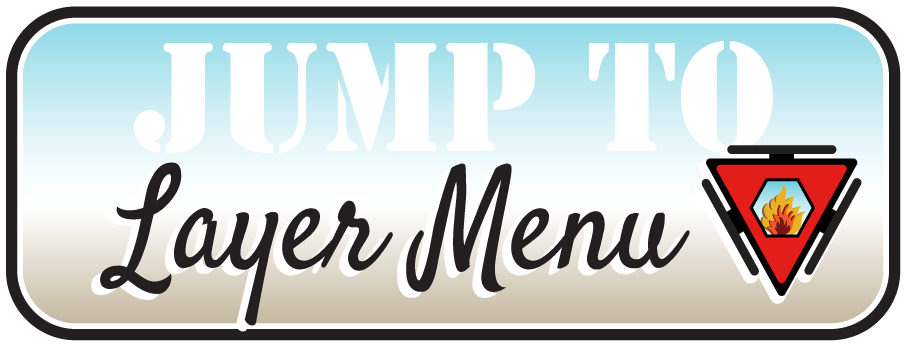Layer Three, Week Three – Sunday
- Morning – Watch Videos and Read Instructions Slow Motion Joint Articulation and Squat
- Midday – Watch Video and Read Instructions Zero, Non-Zero
- Evening – Read Layer Three, Week Three Concepts
- Evening – Practice Slow Motion Joint Articulation
Sunday’s Focus
Give some thought to the different aspects of your life in terms of balance. Think about your intentions, aspirations, and trajectory for optimum health, success, relationship, fulfillment and fun. Ask yourself where your life is in-line and out of line with the optimal. Be honest; don’t qualify your answer with arguments about time, resources, or opportunities.
Sunday’s Concepts
Last week we talked about distractions and how they are triggered by imbalance. In the next two weeks, we are going to give you a fuller understanding, maybe a new paradigm, on what balance is, how to achieve it, how to recognize when you are transitioning out of balance, and how to regain it.
First, let’s define balance as the place of optimum health in any given moment. And let’s define health as the place of optimum growth, function, fluidity, happiness, and fulfillment.
If balance is the place of optimum health and optimum health includes growth; your balance point will change, it will evolve as you grow. For example: if you are a runner and you run consistently, there will be a distance and speed that is optimal, a balance point between maximum benefit and overuse injury. As you progress, that distance and speed will change.
In every relationship there is a balance point between autonomy and partnership. In your career, there is a balance point between the hours you work, your pay, and your responsibilities. Parenting gives you endless opportunities to balance mothering and smothering, independence and authority, and being supportive or controlling. Everything has a balance point and they will always be fluid.
Layer Three, Week Three – Monday
- Morning – Practice Slow Motion Joint Articulation
- Evening – Read Layer Three, Week Three Monday Concepts
- Evening – Practice Squat#L3W2TueConcepts
Monday’s Focus
As you move through the next few days, relate the daily experiences of your life to balance. Balanced will feel centered, focused, energized, and present. Unbalanced will be everything else. Begin to identify how, where, when, with whom, and to what degree you are typically unbalanced.
Monday’s Concepts
Generally, five things influence your overall balance: your physical body, emotional body, mental body, subtle body and your environment. Each body influences every other body. And each body contributes to your overall balance.
If you smash your thumb, your muscles will tense all the way up your arm into your shoulder and neck. A smashed thumb will also have an effect on your emotions and your ability to concentrate (on anything other than your thumb). A throbbing thumb will hamper your ability to fluidly interact with others and others will appear much less attractive and interesting.
If you are in a dysfunctional relationship, it will make it harder to be happy, present, and fulfilled in your career. You are more likely to smash your thumb if your relationship is tumultuous. Trouble at work will make it harder to be intimate with your partner or to stay patient with your children.
These examples are obvious but you may have not connected the outcomes and the relationships between your bodies to the general concept of balance.
Layer Three, Week Three – Tuesday
- Morning – Practice Slow Motion Joint Articulation
- Evening – Read Layer Three, Week Three Tuesday Concepts
- Evening – Practice Squat
Tuesday’s Focus
Continue to feel for the qualities of balanced and unbalanced. Focus on your physical body. What does it feel like when you are balanced? What sensations are present when you are lacking balance? Where in your body do you feel balance and unbalanced the most? Feel for the transitions. Remember, you are identifying sensations, not emotions or thought patterns. Sensations will be words like hot, cold, tight, sharp, dull, deflated, and clammy. Click here to download a big list of sensations.
Tuesday’s Concepts
Your levels of strength, stability, flexibility, and endurance affect your physical body’s balance. What you eat influences your strength and endurance. Eat poorly and you get out of balance. If your lower back is tight, every complimentary or antagonistic muscle group will try to compensate … adding to the imbalance. If muscle/fascia interconnectedness interests you, there is a terrific book call Anatomy Trains I highly recommend.
Every cell in your body has the capacity to receive, collect, hold, generate, and burn energy (Action Potential). The same is true for groups of cells, tissues, organs, systems, and your body as a whole. In the ultimate contrast, every cell can create energy or eliminate it, conception and death.
Layer Three, Week Three – Wednesday
- Morning – Practice Slow Motion Joint Articulation
- Evening – Read Layer Three, Week Three Wednesday Concepts
- Evening – Practice Squat
Wednesday’s Focus
As you find yourself mentally and/or emotionally imbalanced, begin to feel for the opposing thoughts and feelings. If you are angry, feel for the things in your life that you appreciate just the way they are. If you are sad, remember some past event that was fun or joyful. If you find yourself ruminating on a past traumatic event, invent a fictional utopian future like what you would buy if you won the lottery, co-hosted a prime-time special with Oprah, or what if would feel like to ride the latest, greatest dirt bike on the sickest trails on the planet (my favorite).
Wednesday’s Concepts
Emotions are the same way. Your emotional body can create potential (energy), hold the energy of past experiences or traumas, receive the emotional energies from others or other things, and emotions can burn huge amounts of energy.
If your emotional energy is in-line with your intentions if can enhance your balance, increase your momentum, extend your endurance, and make it easier to focus, be flexible, and productive. When your emotional body is not aligned with your intentions and trajectory, it pulls you out of balance and your systems have to expend more energy to try to regain an acceptable margin of balance. Grief is a powerful example of this as is jealousy, rage, and despair.
Emotional balance includes the ability to focus your emotions in a way that parallels your intentions. An example of this would be using your anger as fuel to finish a project, push past your resistance, or overcome a fear.
Your emotions will also have a dramatic effect on your physical body, mental body, subtle body, and your environment. Again, this is obvious, but we’d like you to begin to think of it in contrasts. Begin to feel how your emotional balance enhances your physical health and how being emotionally imbalanced impairs your health. Optimal physical and mental health cannot exist without emotional balance.
Layer Three, Week Three – Thursday
- Morning – Practice Slow Motion Joint Articulation
- Evening – Read Layer Three, Week Three Thursday Concepts
- Evening – Practice Squat
Thursday’s Focus
Feel for the times, circumstances, and situations where things feel effortless, fluid, and playful. Feel for the people, places, and things that challenge your fluidity. Identify the aspects of your life that feel hard, effortful, or disjointed. Begin to feel for opportunities to be playful. Ask yourself in every situation if it feels like you could really be yourself; be open, intimate, and transparent. If not, there is imbalance.
Thursday’s Concepts
Your mental balance is largely determined by how much energy your subconscious mind consumes. Think of your subconscious mind like holding a ball high above your head. The smaller and lighter the ball, the less effort it takes to keep it in place; as it gets bigger and heavier, it gets harder to manage. The challenge with the subconscious mind is that you are generally not aware of how heavy the ball is.
The energy consumption of your subconscious mind may seem minor, just random thoughts, frenetic cycling between opposing options, and obsessive, repetitive, and pervasive minutia. In reality, those things add up. It is like letting your garden hose run full blast 18 hours a day.
Add to that the collusion with your emotional body and you can feel how much of your mojo is depleted. The majority of your fatigue can be traced back to the manipulations and permutations of your mental body, subconscious mind, and emotional fluctuations.
Your conscious mind, on the other hand, burns very little energy and is rarely out of balance. As you teach your conscious mind to wrestle control away from your subconscious mind, your fatigue will vanish.
Layer Three, Week Three – Friday
- Morning – Practice Slow Motion Joint Articulation
- Evening – Read Layer Three, Week Three Friday Concepts
- Evening – Practice Squat
Friday’s Focus
When you are stressed or overwhelmed, try to identify the gross imbalance. Check in with each of your bodies and feel for anomalies. Which body seems to be overcharged? Undercharged? Stagnant? Refer to your list of energy configurations. Start with your mental body; the overwhelming majority of the time it will be the culprit. Most of us spend way too much time in our heads. Once you find the imbalance, activate your other bodies. If you are mentally out of balance, move your body, feel something deeply, and/or meditate.
Friday’s Concepts
The balance and imbalance of your subtle body is much more fluid. Your subtle body includes or encompasses the energy of your other bodies and the deeper layers which depending on your belief system would include electromagnetic field, chakras, auras, meridians, prana, chi, hara, intentions, potential, beliefs, relational cords, and soul.
When your subtle body is out of balance, it restricts the flow of energy through and between the other bodies. Your subtle body is kind of like a conductor in an orchestra. Your subtle body allocates where your energy goes, where it doesn’t go, and the degree to which if flows.
Your subtle body, unless overridden, is largely controlled by your subconscious mind. It is also very habitual, defaulting to established and familiar patterns. Meditation can be a powerful balancing agent for your subtle body
Layer Three, Week Three – Saturday
- Morning – Practice Slow Motion Joint Articulation
- Evening – Read Layer Three, Week Two Saturday Concepts
- Evening – Practice Squat
Saturday’s Focus
As you are able to identify with the sensation and experience of being balanced (or more balanced than is typical for you), ask yourself what you might do to increase or amplify that sensation and experience. After you ask yourself, sit quietly and see what comes up. If nothing comes to you, try putting on a smile, soften any self-judgment, and move your body gently and rhythmically. Listen passively and allow the possibilities to present themselves. If nothing comes to you; take some time and celebrate being balanced.
Saturday’s Concepts
Overwhelm, anxiety, and stress all result from an overactive subconscious mind and a subtle body that is out of balance, unstable, frenetic, and dysfunctional.
Creating, maintaining, and gaining an increased subtle awareness of your balance points is the solution to stress. Understanding the workings of your subconscious mind, limiting its influence, lowering its energy consumption and increasing your capacity will eliminate all feelings of overwhelm. Monitoring directing the energy flows of your subtle body will allow you to disperse any anxiety that arises.We will discuss this more next week.
Slow Motion Joint Articulations
Step 1 – Grasp your forearm firmly just above your wrist with the opposite hand.
Step 2 – Begin exploring your range of motion. Move your hand in as many directions as possible and find where your movement ends.
Step 3 – Continue to move your hand slowly in multiple directions.
Step 4 – As you articulate your wrist, check in with your emotional body. As you move what emotions surface? Do you find yourself relaxing, settling into the movement or does your agitation increase? What non-related emotions are you aware of?
Step 5 – Track your thoughts. Do they drift toward memories? Do you find yourself making judgments, comparisons, or criticisms? Are you using your thoughts to evoke emotions?
Step 6 – Feel your subtle body energy. As you move your hand by articulating your wrist, where does your energy go? What areas of your body begin to feel more enlivened, pressurized, stagnant, frenetic, or fluid?
Step 7 – Switch hands and repeat steps 2-6.
Step 8 – Begin moving both hands including the additional range of motion gained by articulating your forearm.
Step 9 – Add finger articulation, using different directions and hand gestures. Repeat steps 4-6.
Step 10 – As you continue to explore movements , begin to become aware and feel the connection between your bodies (physical, mental, emotional, and subtle).
Step 11 – Pick one complex movement and do it for a couple of minutes as you repeat steps 4-6.
Why it Matters – Every movement creates a cascade of other movements through each of your bodies. Thoughts bring about emotions, physical reactions, and energetic shifts. Emotions connect to memories, upwell energies, and can completely alter your physical configurations. Physical movements will always alter your mental and emotional landscapes and shift your subtle body energies.
Everyday Usability – As you learn to increase your awareness of the interconnectivity of your bodies, you will get better at discerning your transitions. As you are able to discern your transitions, you will be able to alter and adjust your bodies more easily which will help you to remain in the most beneficial, productive, and fulfilling configurations.
Progression – Your can do this exercise with every major joint. Try doing it with your ankles, hips, shoulders, and neck. Try the above movement while walking. Try it supine or seated. Get into a plank pose (push-up) and alternately lift and articulate each wrist and ankle.
Let’s Call it Squat
Step 1 – Do whatever is necessary to get into a comfortable squat position with the front and back of your feet equally weighted. Find a physical configuration (shape, posture, pose) you can hold without effort for a few minutes. You might need to support your heels or sit on something. It is important to be comfortable enough to relax and breathe easily.
Step 2 – Warm up your lower tissues, articulate your hips and ankles. Open and close your hips, move your knees toward and away from your centerline. Bring your attention and your energy into your hips, legs, and feet.
Step 3 – Once you are warmed up, begin to settle. Encourage all of your bodies to settle. Feel your heart rate and respiration lower. Feel your physical body soften and relax. Begin to quiet your mind and diffuse your emotional energy.
Step 4 – After you begin to soften, initiate some gentle circular or undulating movement in your spine, hips, and ankles. Soften your eyes and jaw.
Step 5 – Mentally, bring your attention and focus to what the movement feels like. How many sensations can you be aware of?
Step 6 – Emotionally connect to what is happening with your emotional configuration as you hold the squat.
Step 7 – Set an intention to bring the mental, emotional, and physical anxiety levels down. Continue for a few minutes.
Step 8 – When your bodies feel balanced, begin to see if you can elevate the energy levels in all of your bodies simultaneously. Increase your vibrancy; let it be a choice that you make.
Why it Matters – This is a practice not only of balance but also in self-determination, intentionality, and presencing. If you do this practice regularly, you will gain the ability to determine your moods, mental state, energy levels, vibrancy, and your physical poise and prowess.
Everyday Usability – Imagine if you could, at will, change your way of being, how you present yourself, how you feel, your mindset, and your energy levels. What if you could eliminate pain, suffering, tension, stress, and overwhelm by making a decision. This practice is the doorway.
Progression – Do these steps while doing anything else. Start with things that are simple, solo, or without mental and emotional triggers. Gradually progress to doing the practice with another person and then in small groups. Work your way up to doing it with people that generally trigger you and in situations that are typically challenging.
